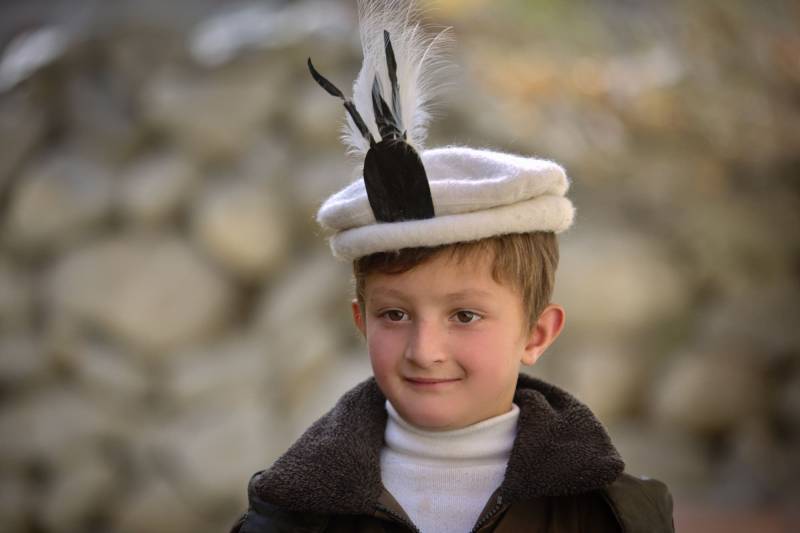ISLAMABAD: The cultural heritage of an area plays an important role in highlighting the traditions of that place and this can be very well-judged by the observance of May 10 as “Gilgit-Baltistan Cap Day” as announced by the government there.
The dress plays a central role in the identity of a person and the region and traditional clothing of a region is influenced by local culture, geography and weather. Same stands true in case of Gilgit-Baltistan which has rich, beautiful and unique cultural heritage manifested in local traditions, music and dress.
The traditional cap of Gilgit Baltistan has played a vital role to define the identity of people of Gilgit Baltistan. In Gilgit Baltistan, the men wear traditional cap and hence great importance is given to the cap by people and government of the area.
Accordingly, May 10 is observed in the area as Gilgit cap day. The cap has different names in the major local languages and different colours. The soft, round and flat-topped cap is usually white and grey in colour and is made of the finest wool. They are usually decorated with either a tuft of feathers or a flower. It is called Khoi(cap) in local languages.
Its history can be traced back to the days when the region was still divided among small, but fiercely independent princely states which existed before 1947. The cap itself is believed to have become a mainstay of the region during the 17th and 18th centuries.
Gilgiti khoi or cap originated in Gilgit-Baltistan and Chitral region and gained fame and popularity amongst the North-east. It also gained popularity amongst the Pushtoon, Nuristanis and the Tajiks of Panjsher and Badakhshan Afghanistan. It is also worn by some Pashtun tribes who live in Kunar and Laghman.
Gilgiti style of cap, which is worn much like a knit cap. The hat is worn in Hunza, Gilgit, Skardu, Chital, many parts of Pakistan, in Uzbekistan and Tajikistan as well. It is also worn in some Northern regions like Jammu and Kashmir where Dard (Shina speaking people live) which was historically part of Dardiatan.
They consider it a symbol of honour whether they are at home or in Bazar, local celebrations or place of worship they prefer to wear their cap. They will have their different caps for work, cap for formal dressing and for routine day to day business. So far very few types of research have been done about the Gilgiti cap and its real origin.
Making a woollen Patti from local wool is a long process. Local artisans make it. Once the woolen Patti is ready, it is sewn into a cap by local tailors. The cap has two parts. The cylinder part which is about 10 to 12 inches long and the round part which is sewed and fitted on the top of cylinder part. Once the cap is sewn the rim of the cap is rolled upwards towards the top forming a band. The band of Gilgit cap is thin in contrary the chitrali phakol has a thick band.
Abdul Hafeez, a local trader of Gilgit Caps at Pul road Gilgit said that the most important feature of the Gilgit cap was the peacock plume and the feather stuck in front or on the side of the cap.
He further stated that it gave a very elegant look to the cap; it was considered a part of formal dress cap and used in groom’s dress.
He regretted that very little information was available about the history and significance of feather and peacock plume on Gilgit cap. “In many parts of Gilgit Baltistan a small fresh flower is stuck in front and side of the cap. Flower is a symbol of freshness, fragrance and livelihood,” he said and added,
“When the spring season starts, sometimes the farmers and shepherds stuck a pine tree leave to symbolize life.”
One of the customs of many regions in Gilgit Baltistan is to stuck money into the cap while someone is dancing. This symbolizes the love and respect to the dancer by his friends relatives and fans and the dancer gives this money to the musicians once the dance is finished.
Besides, Gilgiti cap also plays a major role in boosting the income of hundreds of local traders. Haider , a shopkeeper in main NLI market Gilgit said, “Daily I sell more than fifty Gilgiti caps as most of the residents of Gilgit Baltistan prefer to buy local or Gilgiti caps to other caps, in addition to that many tourists from other parts of Pakistan and abroad purchase it, he added.
Keeping in view the importance of Gilgit Cap, Government of GB had in April last year announced to observe the event annually in light of the rising number of tourists visiting the valley.
The GB government had decided to introduce the culture to the people living outside G-B and to foreign visitors. Chief Minister Hafeezur Rehman while announcing the annual cap day said last year, “This is our identity and all government officials will put on the traditional cap on this day every year.
May 10 will be observed as Gilgit cap day as declared by the government of Gilgit-Baltistan.






